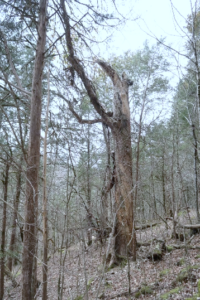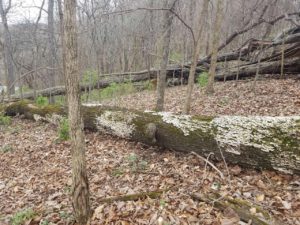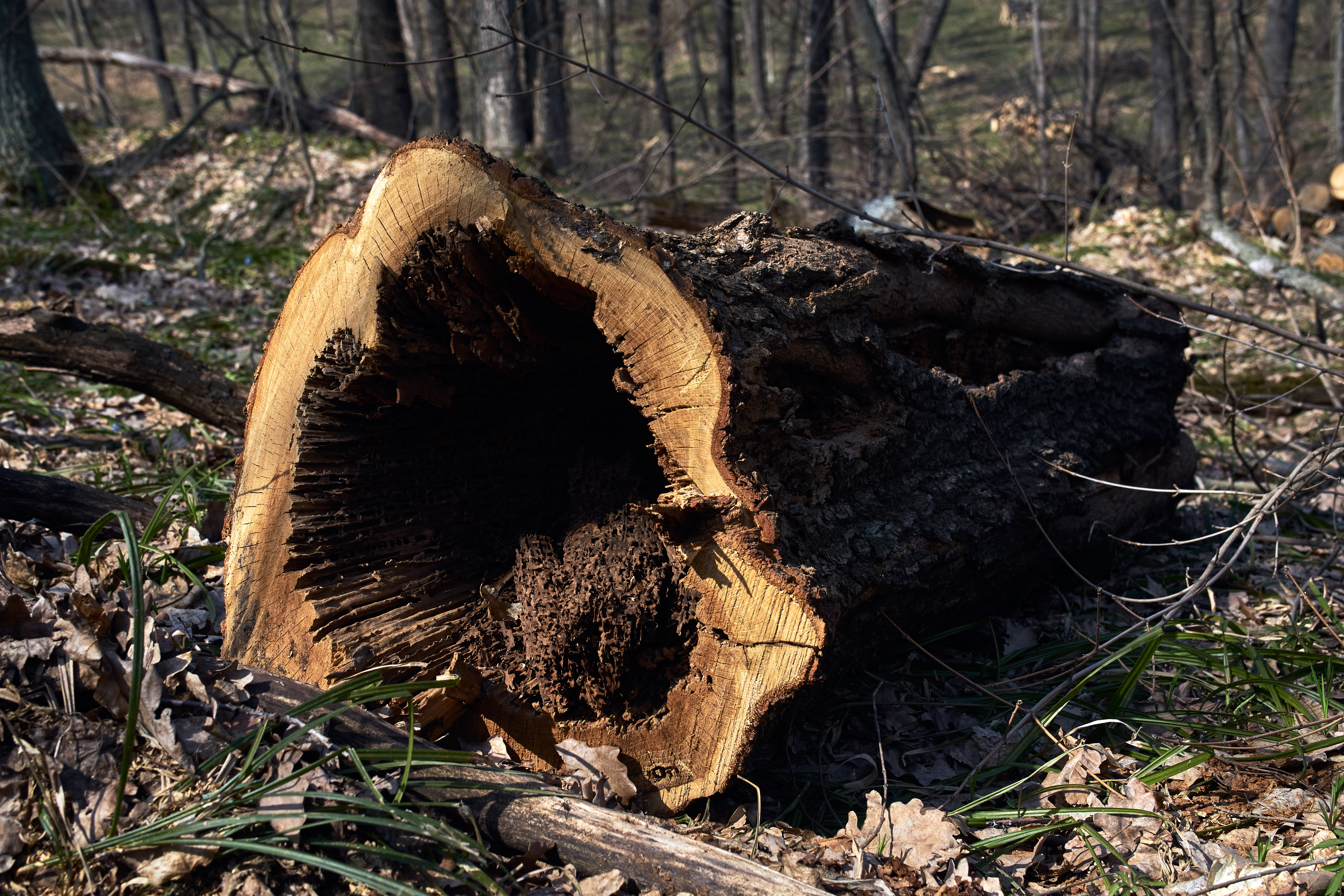Bird watchers and biologists silently cheer upon finding something on conservation land that might seem, at first, like a bad thing to most people: a big dead tree.

If you see a big dead tree in a forest, your first thought should be, “how windy is it today?” before you move to a safe distance away. Your next thought might be, “what a shame that big beautiful tree died.” Many of us feel a twinge of sadness seeing a big dead oak or ash. And we all hate seeing the effects of the many threats to our forests, like the gypsy moth and emerald ash borer. However, trees have a natural lifespan, often being killed by native parts of their home.
When a big tree dies, some residents usually already live inside it. Big trees often have cavities that provide homes to rodents and birds, and once the tree is dead, the number and size of those cavities increases. Tree decomposition is further sped along by the removal of bark by a variety of beaks, claws, and teeth looking for tasty insects and worms. Many insects digest decaying wood and lay their eggs in tunnels or cavities. You may even hear them chewing the wood if you stand quietly near a dead tree. Several additional insects survive by parasitizing or eating the former. All this activity is really the redistribution of the carbon, nutrients, and energy from the organism that all the insects are eating: the tree!
Up in the crown of the tree, there’s less woody material for the insects to eat. Many of the smaller twigs and branches will fall off within a year or two, leaving a relatively wide-open canopy. Birds of prey perched in that crown have a less obstructed view of the ground. With their famously keen vision, raptors can see field mice and rabbits from up there. And since a local hawk wouldn’t have to deal with rustling leaves or extra twigs obstructing its sightline, it could wait to fall on its prey at the opportune moment.
So why call it a wildlife tree? Mammals and birds come up to the trunk and lower limbs like a cafeteria line while raptors, owls, and other birds of prey hunt from the crown. But you can also take a look at ground level. Fungi already in the soil will move into the root system and trunk. Some of these, like oyster mushrooms, are edible for humans and animals. The wood-decomposing mushrooms will break down the parts of the tree that are harder to get to, like the heartwood. Living trees can remain standing with nearly all of their interior rotted away, sometimes taking decades for fungal decay to destroy the structural integrity of a tree. As the tree opens up from beneath, lots of creepy-crawly critters will make their way into this new frontier.
Snakes, salamanders, moles and voles, turtles, and spiders all love the ground-level cavities that open up in a tree’s root system and lower trunk as it decays away. Often, these are the only tree-dwellers that can be viewed up close. But be careful! Do not approach a dead tree in unsafe conditions and without appropriate safety precautions.

If you still feel sad about your big dead tree, remember that sunlight is a high-valued resource in the forest. Increased sunlight reaches the forest floor from the new gap in the canopy to help the next generation of trees get their start, so the forest we work so hard to conserve will still be alive in 500 years.

